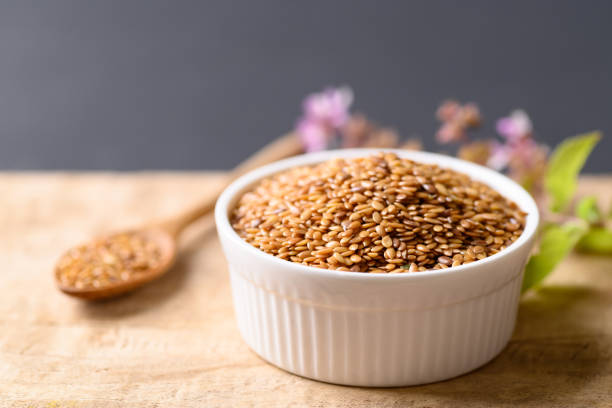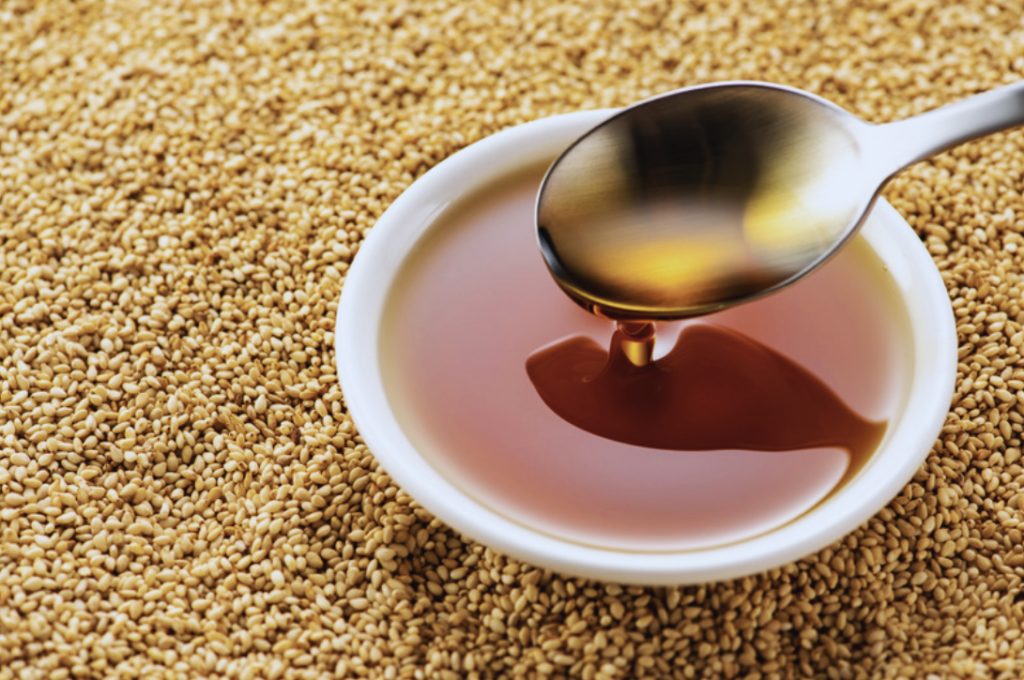What to Eat and Drink
Toast Your Way to Wellness with Toasted Sesame Oil
Are you a fan of Asian food? If so, you might be familiar with the rich, nutty flavor of toasted sesame oil. But is this popular substance genuinely healthy for your health? In this article, we’ll look at the different health advantages of toasted sesame oil and whether it’s worth keeping in your cupboard.
Nutritional Benefits of Toasted Sesame Oil
Sesame oil, particularly the toasted form, is renowned for its distinct flavor and scent. It is widely used in Asian cuisine and may provide depth to a variety of foods, including stir-fries and marinades. Aside from its great taste, sesame oil has various possible health benefits.
One of the primary nutritional benefits is its high antioxidant content. Antioxidants serve an important function in protecting the body from free radicals, which are unstable chemicals that can cause cell damage. Sesame oil includes sesamol, a strong antioxidant with anti-inflammatory effects. Sesame oil may help reduce the risk of chronic diseases including heart disease and cancer by decreasing inflammation in the body.
Toasted sesame oil is high in healthful fats and antioxidants. It contains omega-6 fatty acids, which are required for the body’s normal operation. These fatty acids are essential for brain function, hormone production, and keeping healthy skin and hair. Including sesame oil in your diet can help guarantee that you are getting enough of these vital fats.

Health Benefits of Toasted Sesame Oil
The possible health benefits of toasted sesame oil extend beyond its nutritional content. According to research, sesame oil may improve heart health. Also Sesame oil contains antioxidants such as sesamol, which have been demonstrated to help lower cholesterol levels and inhibit the oxidation of LDL (bad) cholesterol. Sesame oil, by decreasing cholesterol and avoiding plaque buildup in the arteries, may help protect against heart disease and stroke.
Sesame oil has also been shown to have anti-inflammatory properties. Chronic inflammation is a prevalent underlying cause of many diseases, including arthritis, diabetes, and some types of cancer. Sesame oil’s antioxidants can help reduce inflammation in the body, thereby relieving symptoms and boosting overall health.
Additionally, sesame oil may benefit digestive health. It contains lignans, which are known to have prebiotic effects. Prebiotics are drugs that encourage the growth of good bacteria in the gut, improving digestion and boosting the immune system. Including sesame oil in your diet may help maintain a healthy gut microbiota and promote good digestion.
Cooking with Toasted Sesame Oil
Toasted sesame oil is a versatile ingredient that may be utilized in a wide range of recipes. Its rich, nutty flavor lends depth and complexity to both savory and sweet dishes. Here are a few suggestions for using it in your cooking:
- Stir-fries: Add a drizzle to your stir-fried vegetables or protein for a burst of flavor.
- Salad dressings: Create a homemade salad dressing using toasted sesame oil, soy sauce, rice vinegar, and a touch of honey.
- Marinades: Use it as a base for marinades for meats, tofu, or vegetables. The oil’s bold flavor will infuse your dishes with a delicious taste.
- Dips and sauces: Mix it with soy sauce, garlic, and ginger for a flavorful dipping sauce or marinade.
- Baking: Experiment with using it in baked goods, such as cookies or cakes, for a unique twist on traditional recipes.
When cooking with toasted sesame oil, keep in mind that less is more. The oil has a strong flavor, so begin with a tiny amount and add more as needed. It’s also worth noting that it has a low smoke point, making it ideal for low to medium heat cooking methods like sautéing and stir-frying.

Toasted Sesame Oil vs. Regular Sesame Oil
You may be wondering how toasted sesame oil differs from plain sesame oil. Both oils are sourced from sesame seeds, but they are processed differently, resulting in distinct flavors and properties.
Toasted sesame oil is created by roasting sesame seeds before pressing, giving it a rich, nutty flavor and dark amber color. The toasting process brings out the natural oils in the seeds, which enhances the scent and flavor. This sort of sesame oil is commonly used as a finishing oil or flavor enhancer in recipes.
In contrast, ordinary sesame oil is prepared from raw, unroasted sesame seeds. It has a milder flavor and lighter color than its toasted equivalent. Regular sesame oil is commonly used as a cooking oil due to its high smoke point and neutral flavor.
Both toasted and ordinary sesame oil provide health benefits, but the toasted kind has a stronger flavor. Depending on your own preference and the meal you are preparing, you may prefer one over the other. It’s worth trying both types of sesame oil to find your preferred flavor profile.
How to Choose and Store Your Oil
When purchasing toasted sesame oil, it is critical to select a high-quality product to ensure maximum flavor and health advantages. Here are some suggestions for purchasing and preservation:
- Look for cold-pressed: Cold-pressed sesame oil is extracted without the use of heat, which helps preserve its flavor and nutritional value. Look for oils that are labeled as “cold-pressed” or “unrefined” for the best quality.
- Check the expiration date: Like any cooking oil, toasted sesame oil can go rancid over time. Check the expiration date on the bottle to ensure freshness.
- Store properly: To maintain the quality of your oil, store it in a cool, dark place away from direct sunlight. Exposure to light and heat can cause the oil to deteriorate more quickly.
- Keep it airtight: Once opened, transfer the oil to a dark, airtight container to protect it from oxidation. This will help prolong its shelf life and preserve its flavor.
By following these guidelines, you can ensure that your toasted sesame oil remains fresh and flavorful for an extended period.
Recipe Using Toasted Sesame Oil
Looking for ideas on how to use toasted sesame oil in your cooking? Here are some tasty recipes to try:
Sesame Ginger Beef Stir-Fry
Ingredients:
– 1 pound thinly sliced flank steak
– 2 tablespoons soy sauce.
– 1 tablespoon toasted sesame oil
– 1 tablespoon freshly chopped ginger
– 2 garlic cloves, minced
– 1 cup broccoli florets
– 1 red bell pepper, sliced
– 1 tablespoon cornstarch
– 2 tablespoons water
– 2 tablespoons sesame seeds (for garnish)
Instructions:
1. In a bowl, combine the sliced beef, soy sauce, toasted sesame oil, ginger, and garlic. Allow to marinade for at least 30 minutes.
2. Preheat a large skillet or wok to medium-high heat. Stir in the marinated beef and cook for 3-4 minutes, or until browned.
3. Add the broccoli florets and red bell pepper to the skillet and stir-fry for an additional 3-4 minutes, or until crisp-tender.
4. In a small bowl, combine the cornstarch and water to form a slurry. Pour the slurry into the skillet and stir until the sauce has thickened.
5. Remove from the heat and garnish with sesame seeds. Serve the stir fry with steaming rice or noodles.

Potential Side Effects of Toasted Sesame Oil
While toasted sesame oil has various health benefits, it’s vital to be aware of any potential negative effects, especially if you have certain dietary limitations or medical conditions.
For starters, it has a lot of calories and fat, so it should be consumed in moderation, especially if you’re watching your weight. Excessive usage of any oil can cause weight gain and other health concerns.
Second, some people may have adverse reactions to sesame oil. If you have a known allergy to sesame seeds, avoid ingesting sesame oil or see your doctor before introducing it into your diet.
Finally, this oil has a unique flavor that may not appeal to everyone. If you find the flavor too strong, consider using a lower amount or normal sesame oil, which has a milder taste.
If you have any concerns or questions about introducing this oil into your diet, speak with a healthcare practitioner or a certified nutritionist.
Incorporating into a Healthy Diet
Toasted sesame oil can be a tasty and perhaps healthy supplement to a well-balanced diet. Here are some ways for incorporating it into your everyday meals:
- Use it as a finishing oil: Drizzle a small amount over cooked dishes, such as roasted vegetables or grilled fish, to enhance their flavor.
- Make homemade dressings and sauces: Create your own salad dressings and marinades using this oil as a base. Combine it with other ingredients like soy sauce, vinegar, and herbs for a delicious and healthy dressing.
- Add it to soups and stews: Stir a teaspoon or two into your favorite soups or stews to give them a rich and nutty taste.
- Experiment with baking: Substitute a portion of the butter or oil in baking recipes with toasted sesame oil for a unique twist on classic baked goods.
- Pair it with other Asian flavors: It pairs well with ingredients like soy sauce, ginger, garlic, and chili. Use it to add depth and complexity to stir-fries, noodles, and other Asian-inspired dishes.
Remember, moderation is key when it comes to consuming any oil. It’s important to balance your intake and consider the overall composition of your diet to ensure you’re meeting your nutritional needs.
Trusted Health, Wellness, and Medical advice for your well-being


